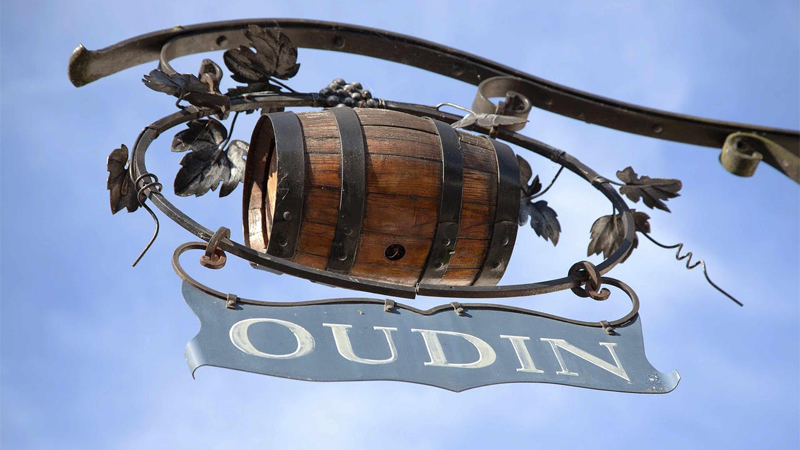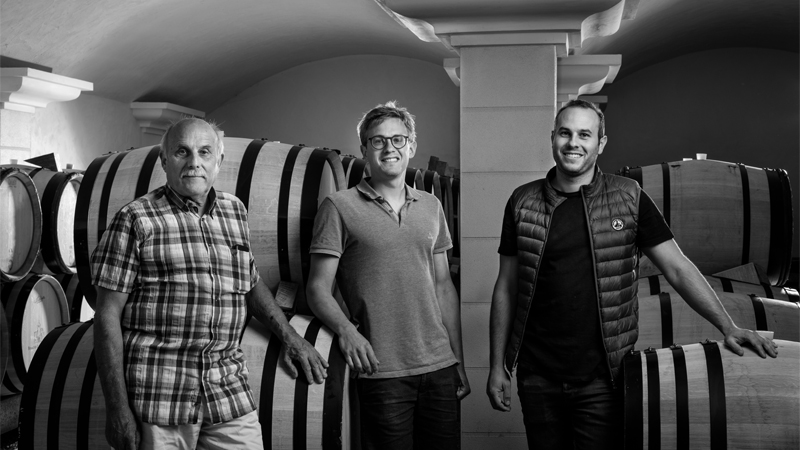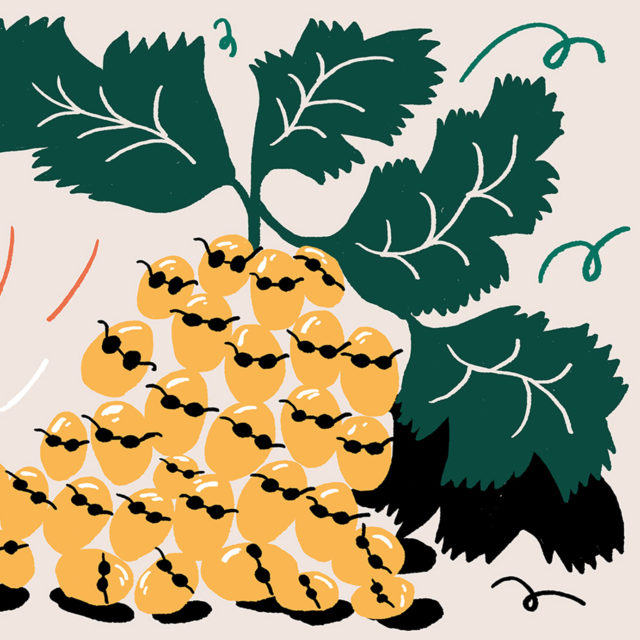The effects of global warming are being felt in nearly every winegrowing region around the world, and while there may be an upside for producers in colder climates where grapes don’t ripen easily, too much heat could be problematic in cool appellations revered for their steely high-acid whites. As temperatures continue to rise, could the signature crisp and zesty profile of Chablis be in jeopardy? We asked three local winemakers, their national sales rep, and some somms to weigh in.
What Winemakers Are Seeing in the Vineyards
David Lavantureux, the winemaker for Domaine Roland Lavantureux in Lignerolles, says that the effects of global warming have been perceptible within Chablis for around 30 years, though in the last decade he’s observed a serious acceleration. He has noticed changes among the flora and fauna in his vineyards, the most destructive of which has been the arrival of leafhoppers. These pests are known carriers of flavescence dorée, a bacterial agent that tends to kill young vines and reduces productivity in older ones.
In neighboring Vézélay, located just beyond the borders of Chablis, vintner Valentin Montanet of La Soeur Cadette says that climate change has created a near-absence of winter in the area, which causes premature starts to the vegetative cycle of the grapevines. This, coupled with the frequent occurrence of late frosts, can lead to the complete loss of a year’s harvest. Nathalie Oudin, the winemaker at Domaine Oudin in Chichée, explains that these very mild winters also impact the soils in the vineyards. “We [need] winter because it destroys microbes and parasites,” she says, adding that the unseasonably mild temperatures can also lead to early bud break.
Montanet points out that significant crop losses have been brought on by spring frosts and intense hailstorms, which he says have become more frequent and severe over the last decade. Oudin says she lost 5 to 40 percent of her crops each year over the last few years, and the losses at Domaine Roland Lavantureux have also been extreme. In 2016, says Lavantureux, “100 percent of our vines were affected.” Another climatic concern, he says, is rain. “This year, we did not have rain for three months, from mid-June to mid-September, but in winter, we’ve had rain every week for three months.” Such massive rainfalls, he says, cause runoff and flooding in the vineyards.

Impacts on the Region’s Signature Style
For a region like Chablis that produces such distinctive and celebrated wines, the effects of global warming could significantly alter certain aspects of its signature style. “The Chardonnay,” says Montanet, “is richer than in the past, but to the detriment of freshness and tension that are two flagship elements of white wines from northern Burgundy.” While global warming may influence some characteristics of the wines, Lavantureux says that it doesn’t affect the minerality, which comes from the contact of the roots with the region’s limestone subsoils. But, he says, the alcohol levels have increased on average by one degree over the last 30 years.
“Certainly we will have wines that are a bit more round and concentrated,” says Oudin, “but I do not think that they’ll lose freshness. The limestone soils of Chablis allow for fine wines full of tension.” She cites the epic heat wave of 2003 as an example. “We were afraid that the wine would not keep,” she says. “When we tasted the 2003 [recently], we had very fresh citrus aromas. It’s the magic of wine.”
Navigating the Effects of Climate Change
So how can winemakers fight temperatures that keep rising? Simply put, it takes meticulous vineyard work. At Domaine Roland Lavantureux, foliage is kept larger and higher to protect grapes from the sun. Harvesting is done in the morning to preserve freshness in the juice, and the cellars remain temperature-controlled. At Domaine Oudin, low-altitude vines are pruned as late as possible, which encourages them to bud later. Oudin chooses to control the amount of foliage on her vines in an effort to avoid high levels of evaporation, which can then lead to water stress and interfere with vine development.
One advantage, says Lavantureux, is that fruit maturity is essentially guaranteed, which has not always been the case in Chablis. “This greatly raises the average quality of the final wines,” he says. “There really are no ‘bad’ vintages anymore.” He also notes that less renowned plots, such as those with eastern and northern exposures, are now capable of making great wines, too, since these vineyard sites are often cooler than grand cru areas.
Another silver lining is that global warming may make it easier to cultivate Pinot Noir, which typically needs warmer conditions for optimal ripeness. For some, however, even the Pinot is getting a bit too ripe. “The Pinot Noirs are becoming richer, but also at the expense of their signature style,” says Montanet. “I [also] don’t have much of a desire to cultivate new grape varieties, though I may not have the choice but to cultivate Syrah one day.”

What It Means for the Market
Would richer styles of Chablis affect sales? Lyle Railsback, the national portfolio manager for Kermit Lynch Wine Merchant — an importer of Lavantureux’s and Montanet’s wines — doesn’t think so. “Growers no longer need to chaptalize and [the grapes] can reach phenolic ripeness more easily,” he says. “Talking to our growers, you get the impression that the warmer temperatures have actually made life easier in terms of the taste of the wines.” Railsback recently presented a handful of 2018 wines to his buyers and notes that they were very well received, both by lovers of classic Chablis and fans of warmer-climate Chardonnay. “A lot of buyers,” he says, “were surprised by the balance and freshness in the wines, despite the ‘new normal’ warmer weather.”
Jeff Harding, the beverage director of the Waverly Inn in New York, doesn’t expect the region’s signature style to change very much. “I think that if [warming] becomes radical, we will start finding more tropical fruit notes and maybe less complexity in the wines,” he says, “but I think people buy Chablis because it’s good, it’s French, and thus, sophisticated. It’s easy to pronounce, and its style is crisp, dry, and bright, which everybody wants. If you do add a more lush note to it, I don’t think that it will hurt sales.” Harding’s bigger concern is lower yields leading to higher prices.
Other buyers aren’t as optimistic. “I’m actually buying less grand cru Chablis because many of them are now so ripe and so powerful, [marked by] higher alcohol and more oak than ever,” says Alexander LaPratt, MS, co-owner and wine director of Atrium Dumbo. LaPratt prefers to purchase premier cru and village-level expressions of Chablis, saying that he finds them to have more of the “minerality and laser-like precision” that he’s looking for.
No one knows exactly how global warming may transform the wines of Chablis over the long term, but there’s good reason to maintain faith in the Chardonnay variety. After all, it’s a grape that thrives in many significantly warmer climates around the world. Still, in trying to meet the shifting climatic challenges they face from year to year, Chablis winemakers have their work cut out for them. Oudin stresses that the big challenge now is deciding when to pick your grapes. “You have to be very precise about the choice of harvest date,” she says. “Know the plots at your fingertips.”
This story is a part of VP Pro, our free platform and newsletter for drinks industry professionals, covering wine, beer, liquor, and beyond. Sign up for VP Pro now!
